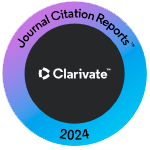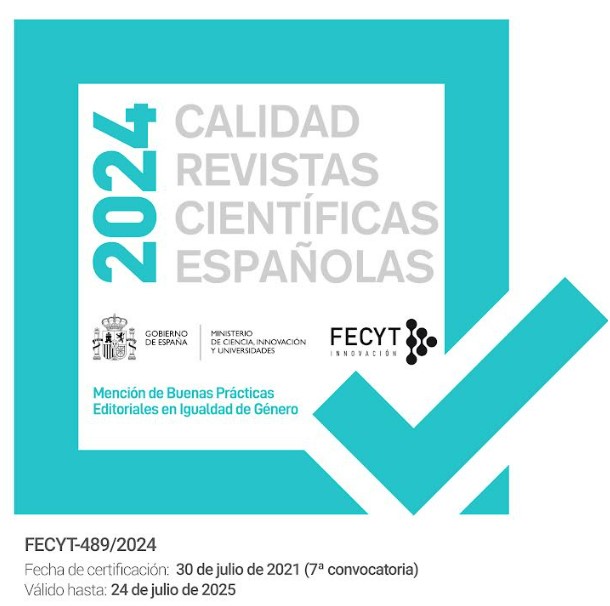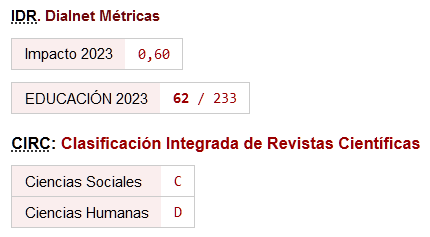Aprendizaje a distancia en línea en medio de la pandemia COVID-19
DOI:
https://doi.org/10.46661/ijeri.5271Palabras clave:
Aceptación, Implementación, Aprendizaje a distancia en línea, Pandemia, COVID-19Resumen
El propósito de este documento es determinar el factor que hace que el aprendizaje a distancia en línea sea exitoso durante la pandemia COVID-19 y se centró en descubrir factores para hacer posible el aprendizaje a distancia en línea durante la pandemia. La investigación es de naturaleza fenomenológica y se realizó durante la pandemia COVID-19. Se utilizó un método de encuesta descriptiva para identificar las habilidades tecnológicas, la actitud hacia las características de un maestro / alumno exitoso en línea y el nivel de preparación de los administradores, junto con los beneficios experimentados que se experimentaron en el aprendizaje a distancia en línea. Se empleó análisis correlacional para determinar la relación entre las variables. La actitud hacia el aprendizaje a distancia en línea está fuertemente relacionado con los beneficios experimentados del aprendizaje a distancia en línea por parte de profesores y estudiantes. La preparación de la institución para adaptar el aprendizaje en línea está fuertemente relacionado con los beneficios experimentados de los administradores. El estudio sacó a la luz las experiencias vividas por los encuestados en el aprendizaje a distancia en línea durante COVID-19. Este documento será útil para los administradores escolares y los maestros como base para la formulación de políticas y programas para la implementación del aprendizaje a distancia en línea que se adaptará al entorno de la “nueva normalidad”.
Descargas
Citas
Andersson, A., & Grönlund, Å. (2009). A Conceptual Framework for E-Learning in Developing Countries: A Critical Review of Research Challenges. The Electronic Journal of Information Systems in Developing Countries, 38(1), 1-16. Retrieved from: https://doi.org/10.1002/j.1681-4835.2009.tb00271.x
Bagayas, S. (2020). Students of top 4 PH schools urge CHED to suspend online classes. Rappler. Retrieved from: https://www.rappler.com/nation/students-top-schools-philippines-call-ched-suspend-online-classes-coronavirus-outbreak
Baht, S. (2020). Top 5 Reasons Why Online Learning Is Better Than Face-To-Face Learning. eLearning Industry. Retrieved from: https://elearningindustry.com/reasons-why-online-learning-face-to-face-learning
Bovermann, K., Weidlich, J., & Bastiaens, T. (2018). Online learning readiness and attitudes towards gaming in gamified online learning – a mixed methods case study. International Journal of Educational Technology in Higher Education, 15(1). https://doi.org/10.1186/s41239-018-0107-0
Doculan, J. (2014), E-learning readiness of the Ifugao State University. International Journal of Engineering Research & Technology (IJERT). Retrieved from: https://www.ijert.org/research/e-learning-readiness-of-the-ifugao-state-university-IJERTV3IS21387.pdf
Educause. (2020), Online learning. Retrieved from: https://library.educause.edu/topics/teaching-and-learning/online-learning
Fell, A. (2020). Generation Z defined; The 5 characteristics of today’s students. mccrindle. Retrieved from: https://mccrindle.com.au/insights/blog/generation-z-defined-5-characteristics-todays-students/
Gādé L., & Manjari, A. (2018). e-Readiness of State Open Universities: A Study of BRAOU and UOU. Retrieved from: https://www.researchgate.net/publication/326848033_e-Readiness_of_State_Open_Universities_A_Study_of_BRAOU_and_UOU
Guillén-Gámez, F. D., & Mayorga-Fernández, M. J. (2020). Identification of Variables that Predict Teachers’ Attitudes toward ICT in Higher Education for Teaching and Research: A Study with Regression. Sustainability, 12(4), 1312. https://doi.org/10.3390/su12041312
ISC RESEARCH. (2020). Coronavirus COVID-19 update. Retrieved from: https://www.iscresearch.com/cornavirus-covid-19-update
Kao, C. P., & Tsai, C.C. (2009). Teachers’ attitudes toward web-based professional development, with relation to Internet self-efficacy and beliefs about web-based learning. Computers & Education, 53(1), 66–73. https://doi.org/10.1016/j.compedu.2008.12.019
Kemp, S. (2019). Digital 2019: Global Internet Use Accelerates - We Are Social. We Are Social. Retrieved from: https://wearesocial.com/blog/2019/01/digital-2019-global-internet-use-accelerates
Kokemuller, N. (2016). The Advantages & Disadvantages of Online Classes Used in Colleges. Education. Retrieved from: https://education.seattlepi.com/advantages-disadvantages-online-classes-used-colleges-1020.html
Mercado, C. (2008). Readiness Assessment Tool for An eLearning Environment Implementation [Conference Session]. Fifth International Conference on eLearning for Knowledge-Based Society, Bangkok, Thailand. Retrieved from: https://www.academia.edu/3294490/Readiness_Assessment_Tool_for_An_eLearning_Environment_Implementation
Moreno, J. & Gortazar, L. (2020). Schools’ readiness for digital learning in the eyes of principals. An analysis from PISA 2018 and its implications for the COVID19 (Coronavirus) crisis response. World Bank Blogs. Retrieved from https://blogs.worldbank.org/education/schools-readiness-digital-learning-eyes-principals-analysis-pisa-2018-and-its
OEDb. (2020). Essential computer and technology skills of online learners. Retrieved from: https://oedb.org/advice/essential-computer-and-technology-skills-of-online-learners/
Omar, N. D., Hassan, H., & Atan, H. (2012). Student Engagement in Online Learning: Learners Attitude Toward E-Mentoring. Procedia - Social and Behavioral Sciences, 67, 464–475. https://doi.org/10.1016/j.sbspro.2012.11.351
Pascual, F. D. (2019). Phl wi-fi: Slow, but deep penetrating. Philstar.com. Retrieved from: https://www.philstar.com/opinion/2019/08/04/1940360/phl-wi-fi-slow-deep-penetrating
Perera, V., Mead, C., Buxner, S., Lopatto, D., Horodyskyj, L., Semken, S., & Anbar, A. D. (2017). Students in Fully Online Programs Report More Positive Attitudes toward Science Than Students in Traditional, In-Person Programs. CBE—Life Sciences Education, 16(4), ar60. https://doi.org/10.1187/cbe.16-11-0316
Saekow, A., & Samson, D. (2011). E-learning Readiness of Thailand’s Universities Comparing to the USA’s Cases. International Journal of Electrical Engineering Education (IJEEE). 1(2), 126-131. DOI:10.7763/IJEEEE.2011.V1.20
Sapungan, G. & Sapungan, R. (2014). Parental Involvement in Child's Education: Importance, Barriers and Benefits. Asian Journal of Management Sciences & Education. 3(2), 42-48. Retrieved from: http://www.ajmse.leena-luna.co.jp/AJMSEPDFs/Vol.3(2)/AJMSE2014(3.2-05).pdf
Santos, J.M. (2017). 21st century learning skills: A challenge in every classroom. International Journal of Emerging Multidisciplinary Research, 1(1), 31-35. DOI: 10.22662/IJEMR.2017.1.1.031.
Shaw, C. (2017). Using facebook as an educational resource in the classroom. International Studies Association and Oxford University Press. DOI: 10.1093/acrefore/9780190846626.013.114
Stern, B. (2016). A comparison of online and face-to-face instruction in an undergraduate foundations of American education course. Contemporary Issues in Technology And Teacher Education. Retrieved from: https://citejournal.org/volume-4/issue-2-04/general/a-comparison-of-online-and-face-to-face-instruction-in-an-undergraduate-foundations-of-american-education-course/
Stone, C. (2017). Opportunity through online learning: improving student access, participation and success in higher education. National Centre for Student Equity in Higher Education. Retrieved from: https://apo.org.au/node/94591
Study International Stuff. (2019). Lack of access to technology at home impedes student learning – study. SI News. Retrieved from: https://www.studyinternational.com/news/lack-of-access-to-technology-at-home-impedes-student-learning-study/
Trines, S. (2018). Educating the Masses: The Rise of Online Education in Sub-Saharan Africa and South Asia. WENR. Retrieved from: https://wenr.wes.org/2018/08/educating-the-masses-the-rise-of-online-education
Trucano, M. (2014). Education & technology in an age of pandemics (revisited). World Bank Blogs. Retrieved from: https://blogs.worldbank.org/edutech/education-technology-age-pandemics-revisited
U.S. Department of Education. (2020). Use of technology in teaching and learning. Retrieved from: https://www.ed.gov/oii-news/use-technology-teaching-and-learning
UNESCO. (2020). COVID-19 Educational disruption and response. Retrieved from: https://en.unesco.org/covid19/educationresponse
Descargas
Publicado
Cómo citar
Número
Sección
Licencia
Derechos de autor 2020 Joseline Santos, Leonora F De Jesus, Ruth R. Sealmoy , Reggie Rey C. Fajardo

Esta obra está bajo una licencia internacional Creative Commons Atribución-NoComercial-SinDerivadas 4.0.












